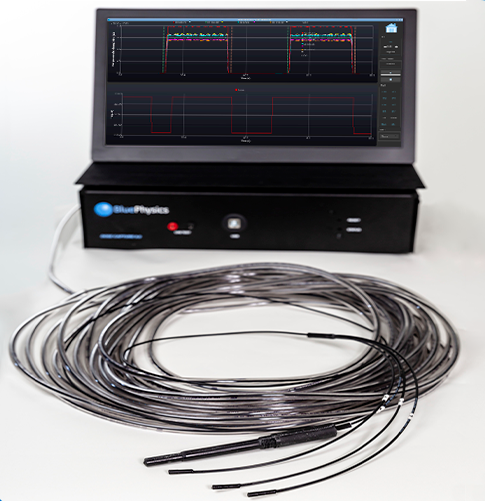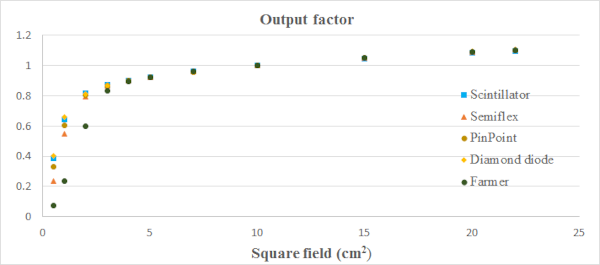Output factors measurement with a new plastic scintillator detector in an Elekta Unity MR-Linac
PO-1580
Abstract
Output factors measurement with a new plastic scintillator detector in an Elekta Unity MR-Linac
Authors: Carlos Ferrer1, Concepción Huertas1, Marcos Feijoo2, David García1, Moisés Sáez1
1HU La Paz, Medical Physics, Madrid, Spain; 2Bluephysics, R&D, Tampa, USA
Show Affiliations
Hide Affiliations
Purpose or Objective
The
dosimetric characteristics of the detectors in a MR-Linac are affected by the
magnetic field. This work aims to study the performance of a novel plastic scintillator
detector in a magnetic field by measuring the output factors and comparing them
with the values obtained with other different standard detectors.
Material and Methods
Plastic
scintillators present several interesting properties, including water
equivalence or linearity of the scintillation response with the incident
radiation energy. A novel plastic scintillator (Bluephysics, Tampa, FL), which
consists in a cylinder of 1 mm diameter and 1 mm long with 0.00078 cm3
sensitivity volume has been employed to measure the output factors in an 7 MV
nominal energy Elekta Unity MR-Linac. Output factors have been obtained with
the scintillator placed at the isocenter at 10 cm depth and SSD 133.5 cm, using
a PTW Beamscan MR water phantom. This is possible because the scintillator is
embedded in a plastic housing that mimics a semiflex 3D PTW ionisation chamber.
Results have been compared with those obtained using four different PTW detectors:
semiflex 3D, pinpoint and farmer ionization chambers and a diamond diode. The measurement
procedure has been the same for all the detectors.

Results
Figure2 shows the differences
obtained in output factors values obtained with the ionization chambers, diode,
and the scintillator. All values are similar down to a 5 x 5 cm2 field
size, while for smaller field sizes, the values obtained with the scintillator in
relation with the ones acquired with the diamond diode were about 0.8 % higher for
field sizes between 4x4 cm2 and 2x2 cm2, but 3.1 % lower
for the smallest field sizes, 1x1 cm2 and 0.5x0.5 cm2.

Conclusion
Results obtained with the plastic scintillators were
similar to the ones obtained with the diamond diode for fields sizes below 4 x
4 cm2, and coincide with all detectors for bigger field sizes, what indicates
that the scintillator is capable of measure correctly the output factors with all
the possible field sizes in an Unity MR-Linac, and could be used in several
future applications.